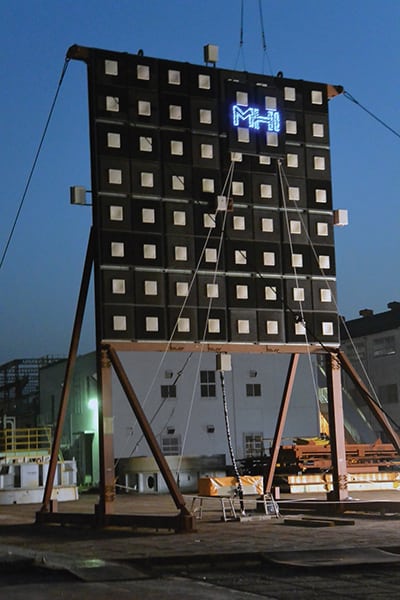MHI Demonstrates Wireless Power Transmission
The wireless transmission of power by microwave over long distances is viable, Japanese technology firm Mitsubishi Heavy Industries (MHI) has proved in a recent ground demonstration test.
The company has been developing the new technology for use in space solar power systems (SSPS)—which it says will be “the power generation systems of the future.” As envisioned, the SSPS will generate power on a geostationary satellite 36,000 kilometers above the Earth using solar panels and beam that power to Earth by microwave (the beams are far below lethal levels of concentration, even for prolonged exposure, developers say) or recently developed solid state lasers. The power received will then be converted to electrical energy.
Far-fetched? Perhaps not. The Japanese Ministry of Economy, Trade and Industry is backing MHI’s efforts, even setting up an incorporated foundation, Japan Space Systems (JSS), to spearhead the technology’s progress. MHI carried out the test at the MHI’s Kobe Shipyard & Machinery Works based on an agreement with JSS. It entailed beaming 10 kW of power from a transmitting unit to a receiver unit equipped with LED lights about 500 meters away (Figure 4).
While the test set a new record with respect to length and volume of the wireless power transmission, it also confirmed the performance of the advanced control system technology used to regulate the direction of the microwave beam so that it does not veer from the targeted receiver unit, MHI said. The company now says it will “pursue expanded practical applications” of the advanced aerospace technology to further the realization of future SSPSs.
MHI isn’t the only entity determined to put into practice a concept first proposed 100 years ago, when Nikola Tesla experimented with wireless power transmission. Experts point out that there are several ideas applying to wireless energy transfer and conversion that are currently being presented and published. Along with long-distance microwave power transmission, concepts being explored involve wireless energy harvesting and near-field magnetic coupling.
Of course, several challenges plague the development and implementation of the concepts, notwithstanding high costs. Some experts forecast, however, that current work being carried out in the U.S. by NASA and in Japan could boost initial commercial power delivery within the next 20 years. However, that would require research and development dollars from various governments to bring enabling technologies to maturity and a near-term involvement by users, including utilities and generators.
—Sonal Patel, associate editor
